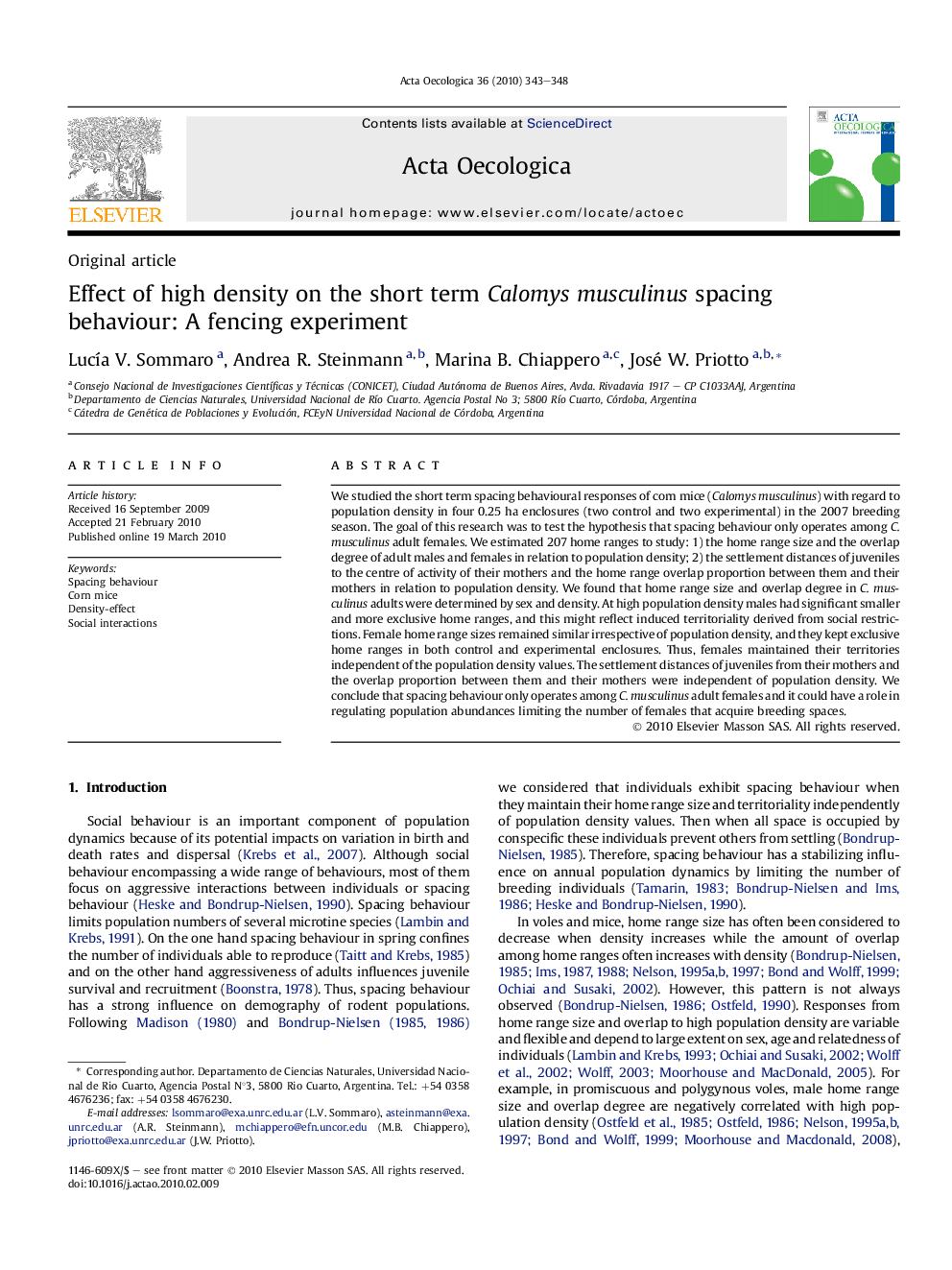| کد مقاله | کد نشریه | سال انتشار | مقاله انگلیسی | نسخه تمام متن |
|---|---|---|---|---|
| 4381336 | 1304066 | 2010 | 6 صفحه PDF | دانلود رایگان |

We studied the short term spacing behavioural responses of corn mice (Calomys musculinus) with regard to population density in four 0.25 ha enclosures (two control and two experimental) in the 2007 breeding season. The goal of this research was to test the hypothesis that spacing behaviour only operates among C. musculinus adult females. We estimated 207 home ranges to study: 1) the home range size and the overlap degree of adult males and females in relation to population density; 2) the settlement distances of juveniles to the centre of activity of their mothers and the home range overlap proportion between them and their mothers in relation to population density. We found that home range size and overlap degree in C. musculinus adults were determined by sex and density. At high population density males had significant smaller and more exclusive home ranges, and this might reflect induced territoriality derived from social restrictions. Female home range sizes remained similar irrespective of population density, and they kept exclusive home ranges in both control and experimental enclosures. Thus, females maintained their territories independent of the population density values. The settlement distances of juveniles from their mothers and the overlap proportion between them and their mothers were independent of population density. We conclude that spacing behaviour only operates among C. musculinus adult females and it could have a role in regulating population abundances limiting the number of females that acquire breeding spaces.
Journal: Acta Oecologica - Volume 36, Issue 3, May–June 2010, Pages 343–348